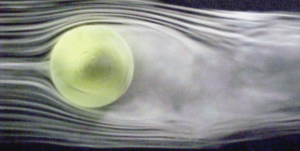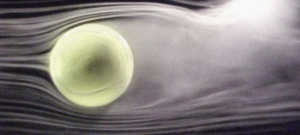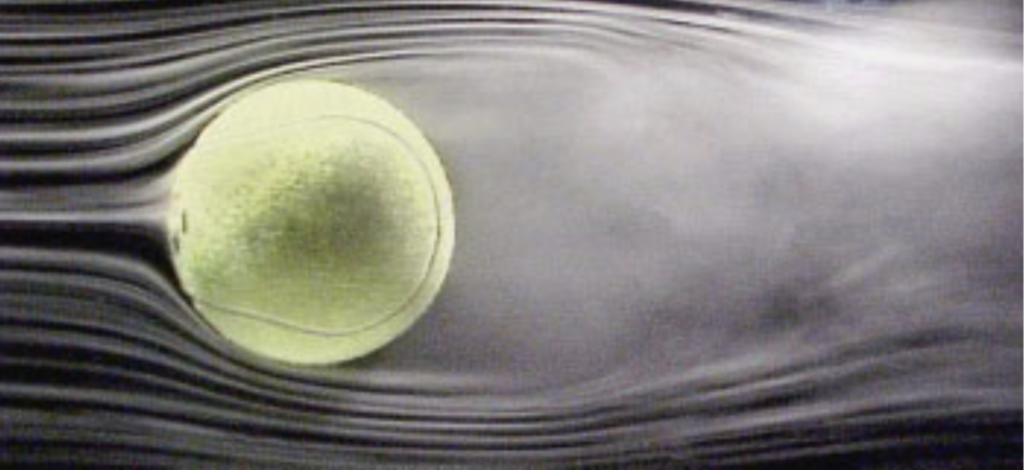There are many relevant examples in our everyday lives of flow visualization that often go unnoticed. As a tennis enthusiast, one that I found particularly interesting was the interaction between a ball and the surrounding air. In the article referenced in my sources, a group of scientists study the effect the spin of a tennis ball has on the surrounding air when undergoing topspin, backspin, and no spin. They also mention the effect of fuzz, seam location, and diameter on flow. They are able to capture and visualize this effect through using smoke flow visualization inside a wind tunnel. What I thought was most interesting in the visuals created by the team was the detail exerted into separating the smokestreams coming from the left in order to highlight the turbulence the ball causes on the right due to spin. The article also goes into depth regarding what speeds and characteristics of the ball result in the different flow patterns. I would definitely recommend reading over the study, which I’ve linked at the bottom.

Tennis Ball with Backspin

Tennis Ball with Topspin
Source:
Rabindra, Mehta, et al. “Review of tennis ball aerodynamics.” Sports Technology, https://doi.org/10.1002/(issn)jst.11.
Link: https://onlinelibrary.wiley.com/doi/pdf/10.1002/jst.11


5 Comments. Leave new
Great job Alexandr!
These images do a great job at showing the smaller flows in life. We usually can’t quite see what’s going on as a ball flies through the air. I think this does a stellar job at shows the small vortices and turbulences that come off of the ball. Good work!
3rd place – this is the classic fluid mechanics example. Its cool to see both laminar and turbulent flow.
Third Prize. Common item to show the laminar flow to turbulent flow with the different spins shows the difference when transition between two flows start.
Second Prize – I think this is a great intersection of photography, scientific research, fluid dynamics, and sports science. It is interesting to see the subtle change of fluids passing over the tennis ball as it has a top-spin and back-spin. This motivates me to set up fluid studies of phenomena that I find interesting.
Third Prize
I really like how you used something as common as a tennis ball to explain such a complex topic. I also think that the images are very cool and convey the science behind them. Finally, as a tennis player myself, I think it’s cool to see the different spins in a close-up like this and how this affects their trayectories.